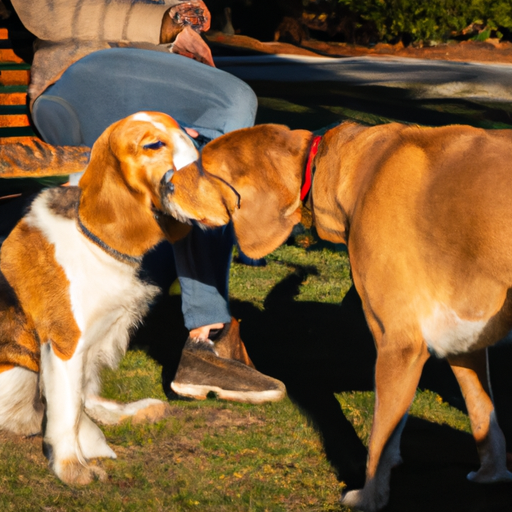Greeting a new canine companion can be a nerve-wracking experience, both for you and the dogs involved. As a devoted caregiver, you want to ensure that the introduction is as smooth and stress-free as possible. This comprehensive guide will provide you with all the information you need to introduce dogs to other dogs successfully and safely.
- Understanding Canine Communication
- Preparation Before The Meet
- The Introduction Process
- Post-Introduction Steps
- Common Mistakes To Avoid
- Frequently Asked Questions
Key Takeaways:
- Understanding how dogs communicate is essential for a successful introduction.
- Proper preparation can make the introduction process smoother.
- The introduction should be gradual and controlled.
- Post-introduction steps are crucial to maintain harmony among the dogs.
- Avoiding common mistakes can prevent unnecessary stress and potential aggression.
Understanding Canine Communication
Dogs have their unique way of communicating, which differs significantly from human communication. They use body language, vocalizations, and scent marking as their primary modes of communication. Understanding these forms of communication can play a pivotal role in introducing dogs to other dogs. You can read more on canine communication at The Humane Society.
Preparation Before The Meet
- Know Your Dog: Understand your dog’s personality, likes, dislikes, and triggers. This information can help you anticipate possible reactions during the introduction.
- Choose a Neutral Location: This will prevent any territorial aggression from arising during the introduction.
- Exercise Your Dogs: Prior to the meet, ensure both dogs have had plenty of exercises. This can help reduce their energy levels and make them more relaxed.
The Introduction Process
The introduction should be gradual, controlled, and positive. Here is a step-by-step guide on how to introduce dogs to each other:
- Start with a Walk: Keep both dogs on their leashes and start with a walk. This allows the dogs to get used to each other’s presence without direct interaction.
- Allow Sniffing: Sniffing is a crucial part of dog communication. Allow the dogs to sniff each other, but do not force the interaction.
- Observe Body Language: Look out for signs of aggression or fear. If any dog seems uncomfortable, separate them immediately and try again later.
You can find more detailed steps on dog introduction at OneTopDog.
Post-Introduction Steps
Once the dogs have been introduced, it’s essential to maintain a harmonious relationship.
- Monitor Interactions: Keep an eye on the dogs when they are together, especially in the early stages.
- Provide Separate Spaces: Each dog should have their own space where they can retreat if they feel overwhelmed.
- Reward Positive Behavior: Reinforce positive interactions between the dogs with treats and praise.
For more tips on maintaining harmony among dogs, you can visit OneTopDog.
Common Mistakes To Avoid
Avoiding these common mistakes can make the introduction process smoother:
- Forcing Interaction: Let the dogs interact at their own pace.
- Ignoring Body Language: Pay attention to the dogs’ body language to prevent potential conflicts.
- Neglecting Individual Needs: Each dog has its own needs and preferences. Make sure to cater to these needs.
For more details on common mistakes during dog introduction, you can check OneTopDog.
Frequently Asked Questions
1. What should I do if the dogs show signs of aggression during the introduction?
Separate the dogs immediately and give them time to calm down. Try a slower introduction process later.
2. How long should the introduction process take?
The introduction process varies for each dog. It could take anywhere from a few minutes to several days.
3. Can I introduce a puppy to an adult dog?
Yes, you can. However, you should supervise the interaction as adult dogs can unintentionally harm a puppy due to size difference.
In conclusion, introducing dogs to other dogs requires patience, understanding, and a controlled environment. Each dog is unique, so the process may vary. However, by following the guidelines in this article, you can make the process smoother and more enjoyable for everyone involved.



